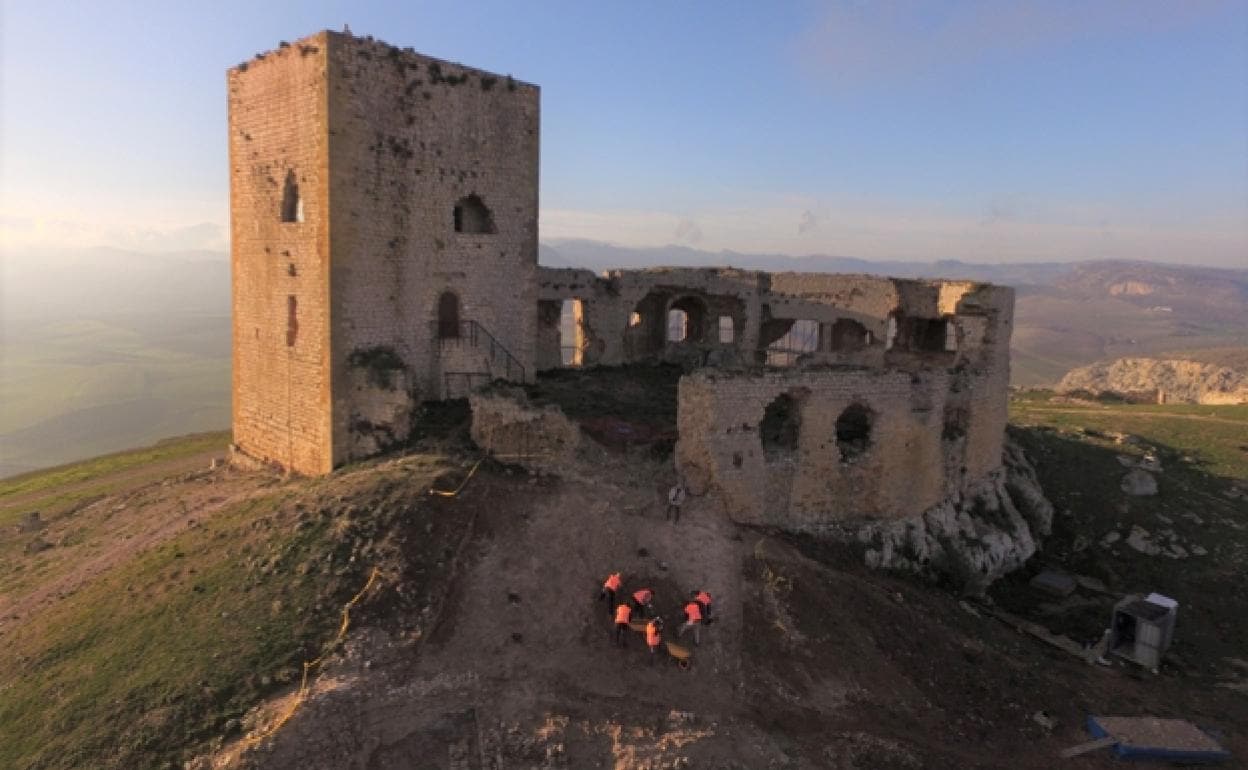

Sections
Highlight

Andrea Jiménez
Thursday, 27 January 2022, 13:05
The University of Granada (UGR) has begun a six-year General Research Project of the Castillo de la Estrella in Teba, a plan financed by the town hall at a cost of 600,000 euros.
After winning the bidding contest, the Prinma research group from ... the UGR has begun archaeological excavations and the study of materials in the area with the aim of understanding the historical evolution of the castle, which occupies about 25,000 square metres of floor space.
The Prinma research group, which belongs to the Department of Medieval History and Historiographical Sciences and Techniques of the UGR, has assigned five archaeologists to work on the project.
Each year, four months of archaeological excavations will be carried out, followed by another four months of studying the materials in a laboratory located in the town hall.
The roadmap of the research project will include several different stages. Work has already begun on the two entrances and walls of the castle, where archaeological surveys are being carried out.
The most recent finds are a floor of sandstone pebbles from the 17th century, and more than 600 lead shot pellets from the Civil War, which were discovered in the fortress walls.
According to archaeologist and the director of the project, Francisco Melero, the works are "very important", since it seeks to know in depth the historical sequence of the castle, from its origins in the Almohad period to its abandonment at the end of the 17th century.
The second year will be dedicated to the study of the interior of the castle, which, after being a fortress, was the palatial home of the Count of Teba in the 16th century.
“We want to know how the castle got bigger. The moment of splendour is the Castilian era in the fifteenth century, but there is a Muslim imprint hidden behind those additions,” Melero said.
During the third year, the chapel of the fortress will be accessed. It is the oldest late medieval Christian church in the province, according to Melero.
“In the 1990s, the interior of this church was excavated. Now we want to clean it and carry out more studies,” he added.
The fourth and fifth years will be dedicated to the investigation of the town, while the sixth year will be planned according to the findings made up to that point.
“We will focus on things that may have been left behind and which arouse interest, such as the water supply system and its wells and cisterns, which are an important part of the castle's urban structure,” the archaeologist said.
The Castillo de la Estrella was declared a Monument of Historical and Artistic Interest in 1931 and a Site of Cultural Interest (BIC) in 1949. In addition, it became the first monument in Malaga to form part of the Network of Great Castles and Tourist Palaces of Spain, in 2020.
Publicidad
Publicidad
Publicidad
Publicidad
Esta funcionalidad es exclusiva para suscriptores.
Reporta un error en esta noticia
Comentar es una ventaja exclusiva para registrados
¿Ya eres registrado?
Inicia sesiónNecesitas ser suscriptor para poder votar.